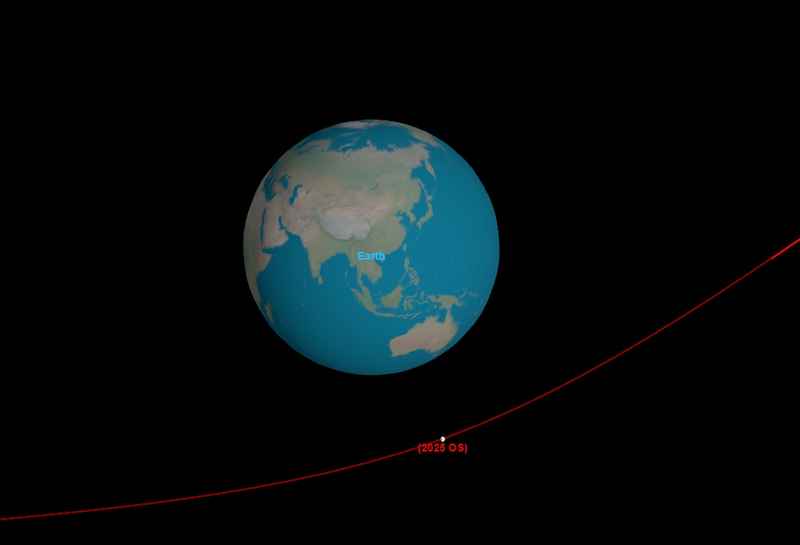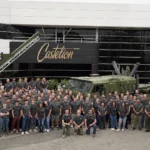Now Reading: ExoMars Mission Achieves Milestone with Advanced Parachute Testing
-
01
ExoMars Mission Achieves Milestone with Advanced Parachute Testing
ExoMars Mission Achieves Milestone with Advanced Parachute Testing


The latest advancements in the ExoMars mission have led to a remarkable achievement in aerospace engineering—successfully testing the most complex parachute system ever devised for use on Mars. This ambitious endeavor is a testament to human ingenuity, showcasing how our quest to explore the cosmos continues to push the boundaries of technology and design.
The pivotal high-altitude drop test was conducted at the Esrange Space Center in Kiruna, Sweden, providing an ideal environment for simulating the Martian atmosphere. A stratospheric helium balloon lifted a dummy descent module to nearly 30 kilometers, where the parachutes were deployed in a meticulously controlled setting. This altitude is akin to three times the cruising height of commercial airliners, enabling an accurate replication of conditions that will be encountered during the descent to Mars.
To simulate the Martian atmosphere—which is merely 1% as dense as that of Earth—scientists had to ensure that the balloon achieved the required altitude. The speed and conditions experienced during free-fall mirrored those that the ExoMars spacecraft will endure when it enters the thin Martian atmosphere at blistering speeds of up to 21,000 kilometers per hour.
During the drop, after approximately 20 seconds of free-fall, the system successfully deployed the parachutes in sequence. This complex choreography is vital; as Luca Ferracina, ESA’s ExoMars Entry Descent and Landing Module system engineer, noted, “The combination of velocity and low atmospheric density in this test is exactly the same as what the parachutes will experience on Mars.” This confidence-building effort allows engineers to analyze the parachute’s performance before the mission launches.
The ExoMars landing strategy incorporates two large main parachutes, each equipped with its own pilot chute for deployment. The first parachute, measuring 15 meters in width, draws inspiration from designs used in earlier Mars missions, such as NASA’s Viking spacecraft. The second, more expansive parachute, which boasts an impressive width of 35 meters, will be the largest parachute ever deployed in the Martian skies or anywhere else in the solar system. Constructed from more than 800 square meters of fabric and over four kilometers of suspension line, this massive parachute is a marvel of engineering.
Each parachute undergoes a painstaking folding process that takes around three days to ensure proper deployment. The storage and design of these parachutes present unique challenges, especially after being held in reserve due to delays associated with geopolitical issues. “We are running this campaign to confirm our readiness for Mars, and to verify that the parachutes are still performing as expected after the long storage,” Ferracina remarked.
Real-time telemetry and high-speed video footage collected during the drop tests are invaluable for future analysis. The data collected will help engineers at Vorticity, the UK company responsible for designing and testing the parachutes, to evaluate key metrics such as deceleration profiles and inflation models. As John Underwood, a principal engineer at Vorticity, explained, “Testing on Earth has the advantage that we can obtain much more data and recover the parachutes for inspection after the test.”
The collaborative nature of this effort is also noteworthy, as various European nations have contributed components to the parachute system. From deployment mortars sourced in the Netherlands to parachute constructions in Italy, and even the parachute container manufactured in Czechia, this project highlights the strength of international cooperation in space exploration. Thales Alenia Space in France oversaw the intricate assembly process, ensuring that each component worked harmoniously.
This remarkable journey toward the ExoMars mission illustrates not only the challenges of landing on another planet but also the ingenious solutions developed along the way. As teams work tirelessly to refine the design and operations of the parachute systems, humanity’s aspirations to explore the formidable surfaces of celestial bodies grow ever closer to realization.
Stay Informed With the Latest & Most Important News
Previous Post
Next Post
-
 012024 in Review: Highlights from NASA in Silicon Valley
012024 in Review: Highlights from NASA in Silicon Valley -
 02Panasonic Leica Summilux DG 15mm f/1.7 ASPH review
02Panasonic Leica Summilux DG 15mm f/1.7 ASPH review -
 03How New NASA, India Earth Satellite NISAR Will See Earth
03How New NASA, India Earth Satellite NISAR Will See Earth -
 04And Thus Begins A New Year For Life On Earth
04And Thus Begins A New Year For Life On Earth -
 05Astronomy Activation Ambassadors: A New Era
05Astronomy Activation Ambassadors: A New Era -
06SpaceX launch surge helps set new global launch record in 2024
-
 07From Polymerization-Enabled Folding and Assembly to Chemical Evolution: Key Processes for Emergence of Functional Polymers in the Origin of Life
07From Polymerization-Enabled Folding and Assembly to Chemical Evolution: Key Processes for Emergence of Functional Polymers in the Origin of Life




















